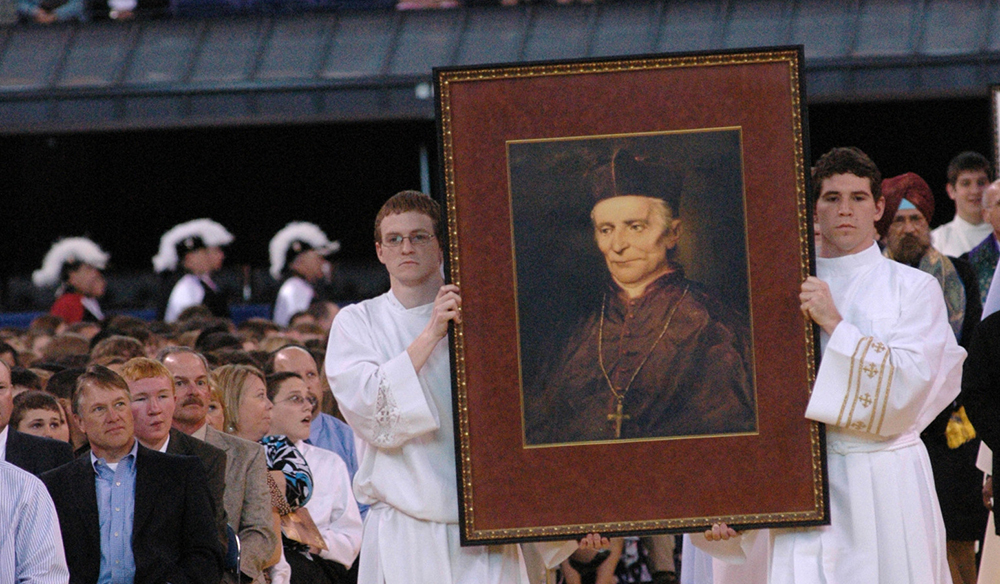The first Hoosier bishop, Servant of God Simon Bruté, should be numbered among the pivotal players of American Catholicism — an exemplary intellect and man of great holiness. It even can be considered that without Bishop Bruté we might have never known two of our own American saints: St. Theodora Guerin and St. Elizabeth Ann Seton. Bruté’s is a life worth knowing.
When the young Sulpician priest Simon Bruté arrived in the United States in 1810, he established himself as an intellectual at America’s first seminary — St. Mary’s in Baltimore — and then two years later at Mount St. Mary’s in Emmitsburg, Maryland. His capable mind earned his description by President John Quincy Adams as “the most learned man of his day in America.” He used his scholarly gifts to contribute to the early Catholic newspapers being formed throughout the East coast. Further evidence of his zeal for the faith is what earned his appointment as a theological adviser to those early Councils of Baltimore. In those early councils of American hierarchy, Bruté advocated for cohesion in Catholic teaching and practice. He had great love for the faith and its growth in his new beloved mission land.
Bruté’s pastoral heart was also seen beyond his academic pursuits. His work as a priest outside the classroom was equally important. During his tenure in Emmitsburg he became known as a gifted pastor and spiritual director — even serving in that capacity for the future saint and foundress Elizabeth Ann Seton. Following her death he insured the preservation of her papers and writings — he was keenly aware of the future saint’s spiritual depth. Bruté later memorialized Seton: “O, such a mother! Such faith and love! Such a true spirit of prayer, of true humility, of true self-denial in all, of true charity to all!” Many of these words of wisdom could also be applied to Bruté.
In recognition of his deep love for the faith, his great intellect, his tender care and zeal for souls, Bruté was named first bishop in Indiana — then the diocese of Vincennes, now the Archdiocese of Indianapolis — in 1834, remarking, “unworthy as I am of so great an honor, and of myself unequal of the charge, my only trust is in God; and, therefore, earnestly calling for your prayers, that I may obtain His Divine assistance, I come to be your chief pastor.”
As bishop of Vincennes, Bruté was responsible for bringing to Indiana the French Sisters of Providence, led by the valiant St. Theodora Guerin. The bishop wished for their assistance in establishing Catholic education in his new diocese that included the entire state of Indiana and a portion of Illinois including Chicago. The request took time to come to fruition, and they arrived in their new Hoosier mission land the year after Bruté’s 1839 death. St. Theodora’s holiness was forged on the Indiana frontier where she was brought thanks to Bishop Bruté’s intervention.
Many regarded Bruté a saint during his lifetime, and his legacy has endured. In 1891, another great American churchman — Cardinal James Gibbons of Baltimore — said of Bruté on a visit to Vincennes: “Worthy citizens of Vincennes, you need not go on pilgrimages to visit the tombs of saints. There is one reposing here in your midst, namely, the saintly founder of this diocese, Right Reverend Simon Bruté.”
In 2005, one of his successors — then-Archbishop of Indianapolis Daniel Buechlein, O.S.B. — formally began the process that intends Bruté’s canonization. The process continues today, and many hope Bruté’s name soon will be inscribed in the Church’s catalogue of saints.
Michael R. Heinlein is editor of Simply Catholic. Follow him on Twitter @HeinleinMichael.

